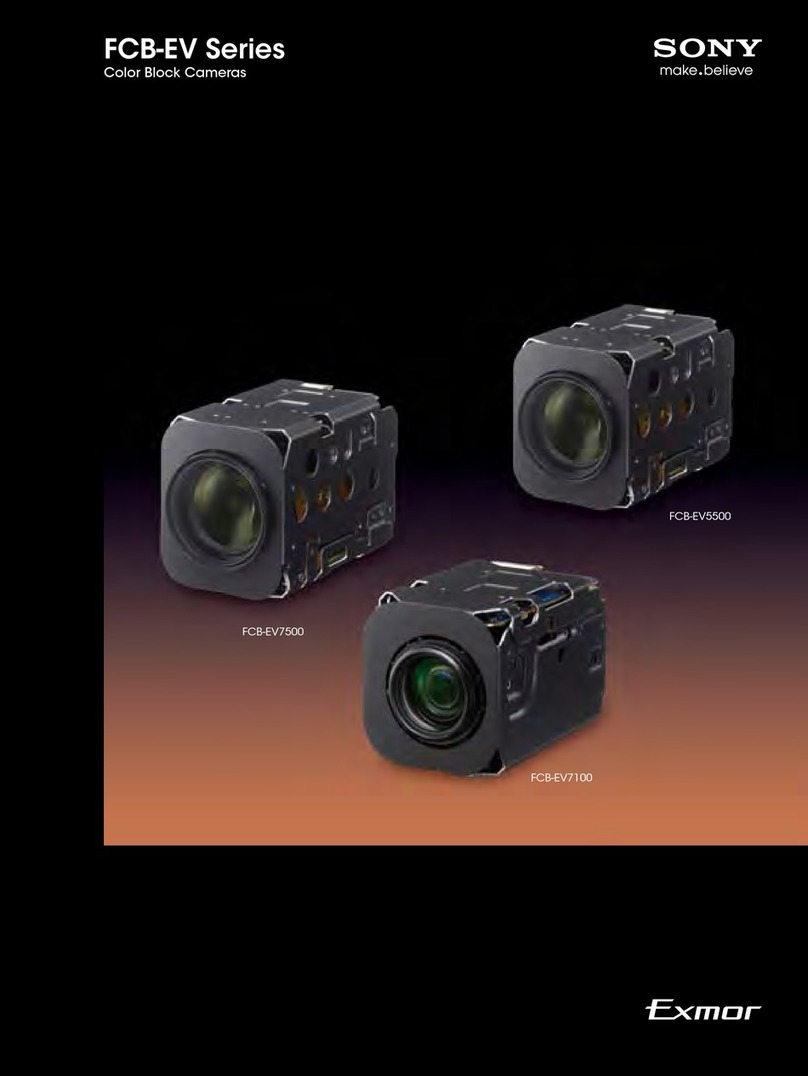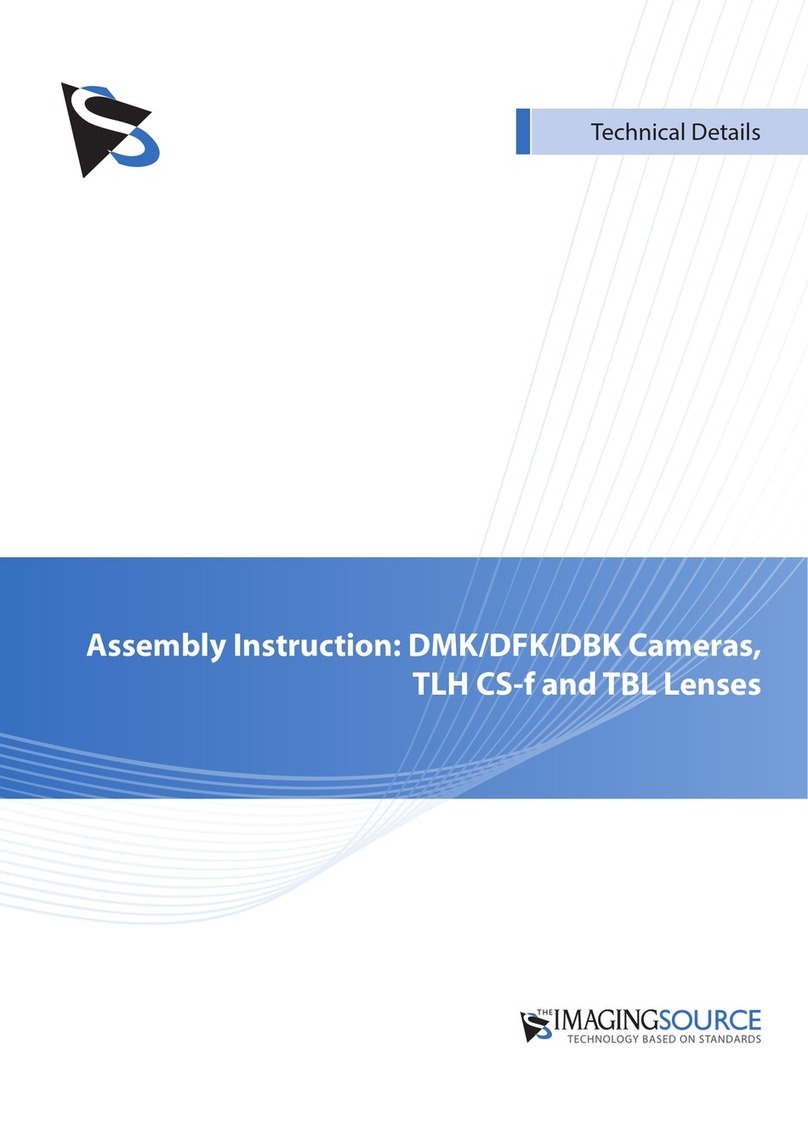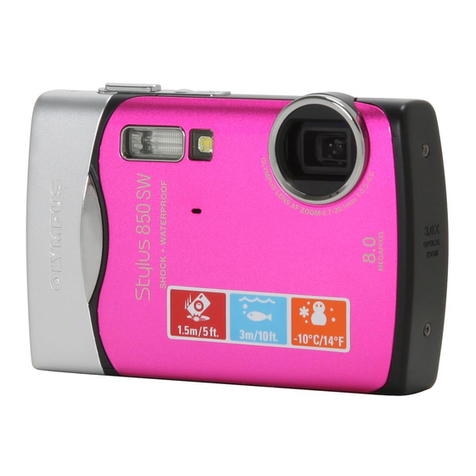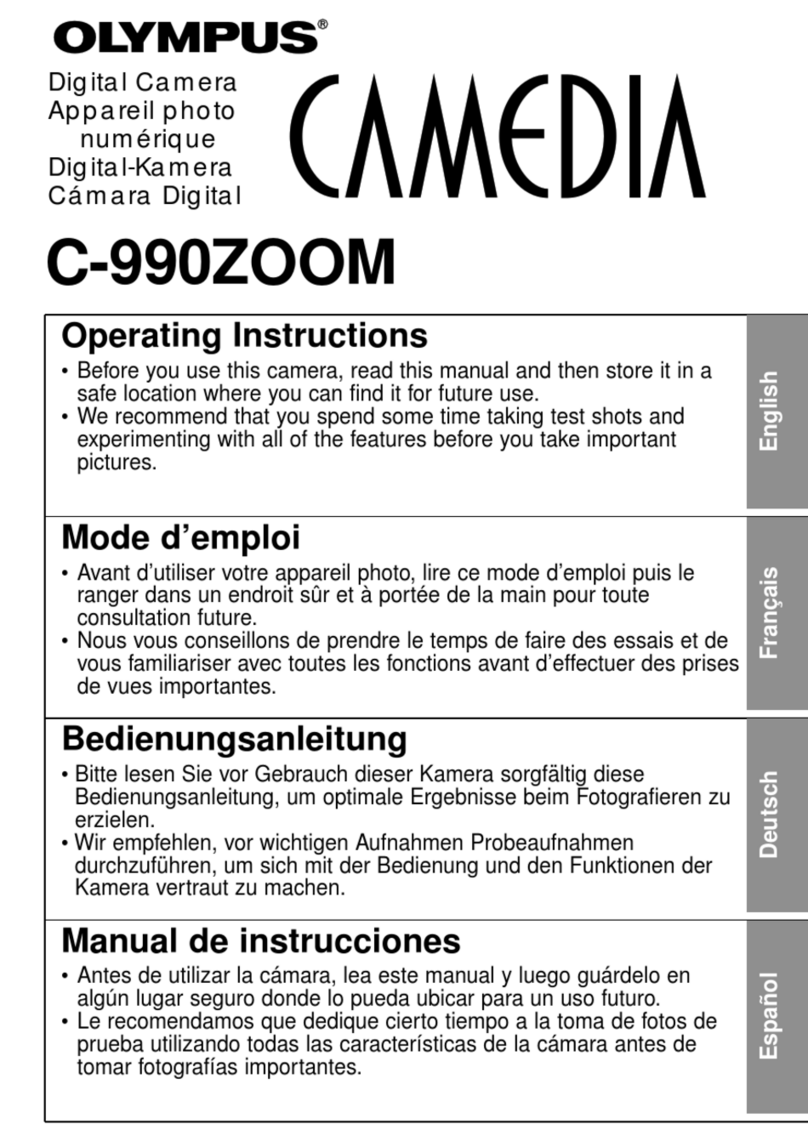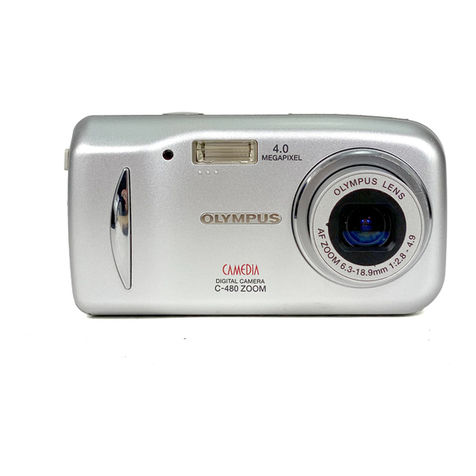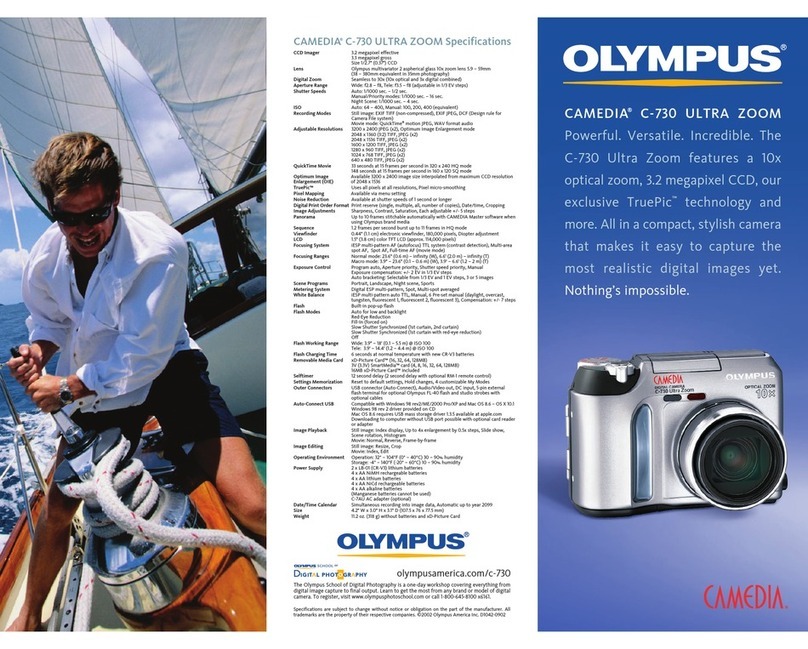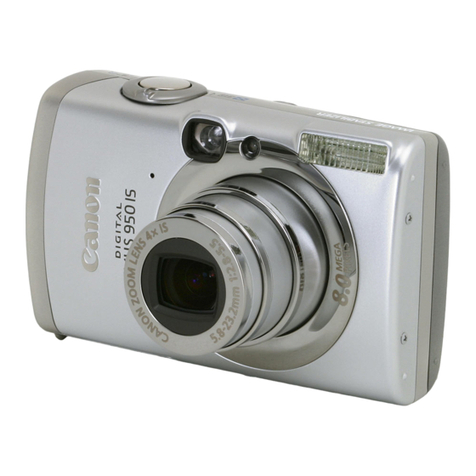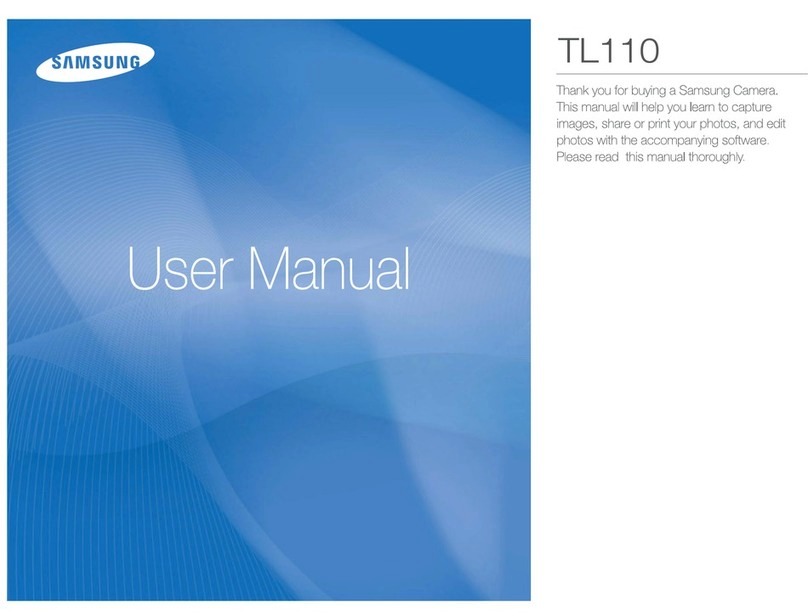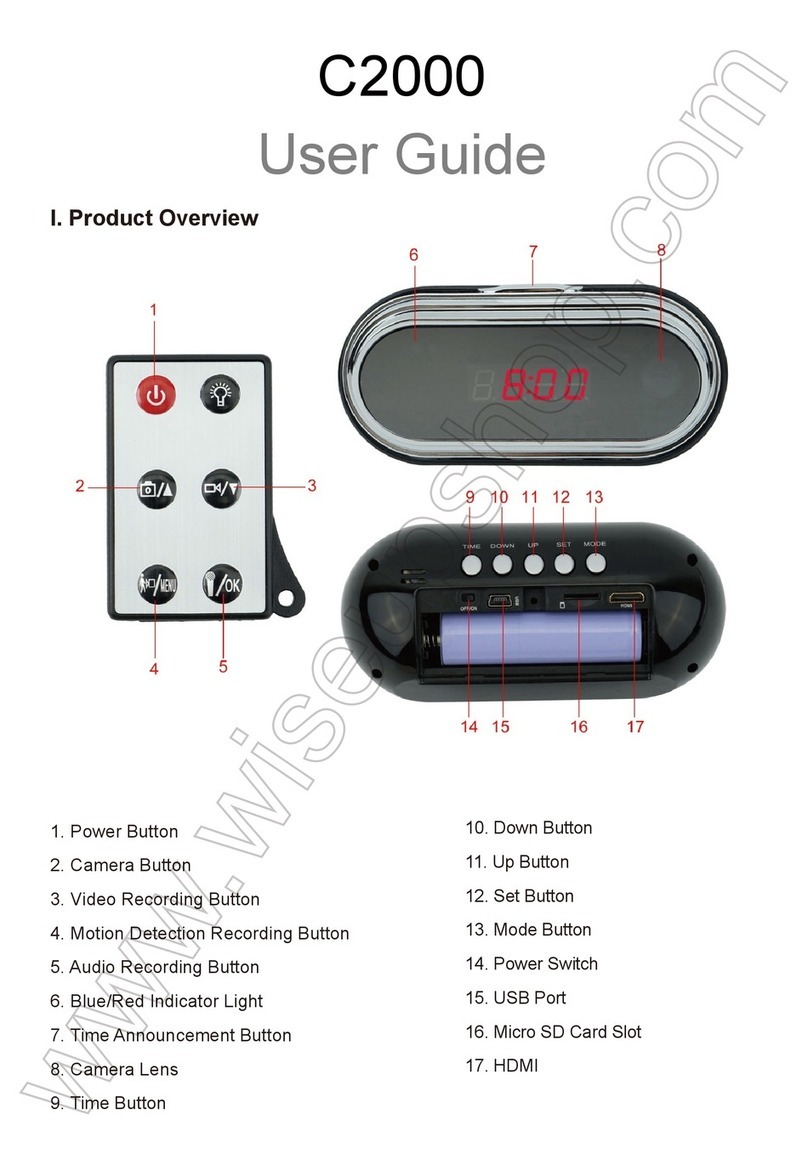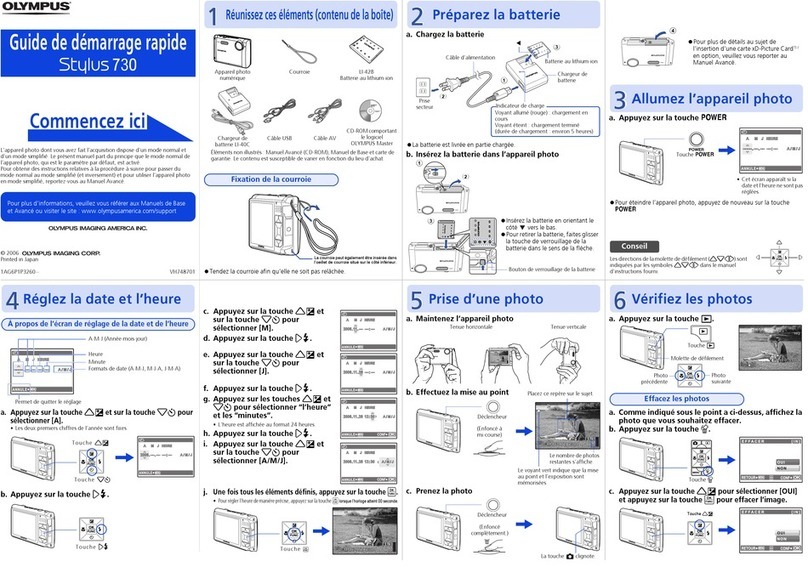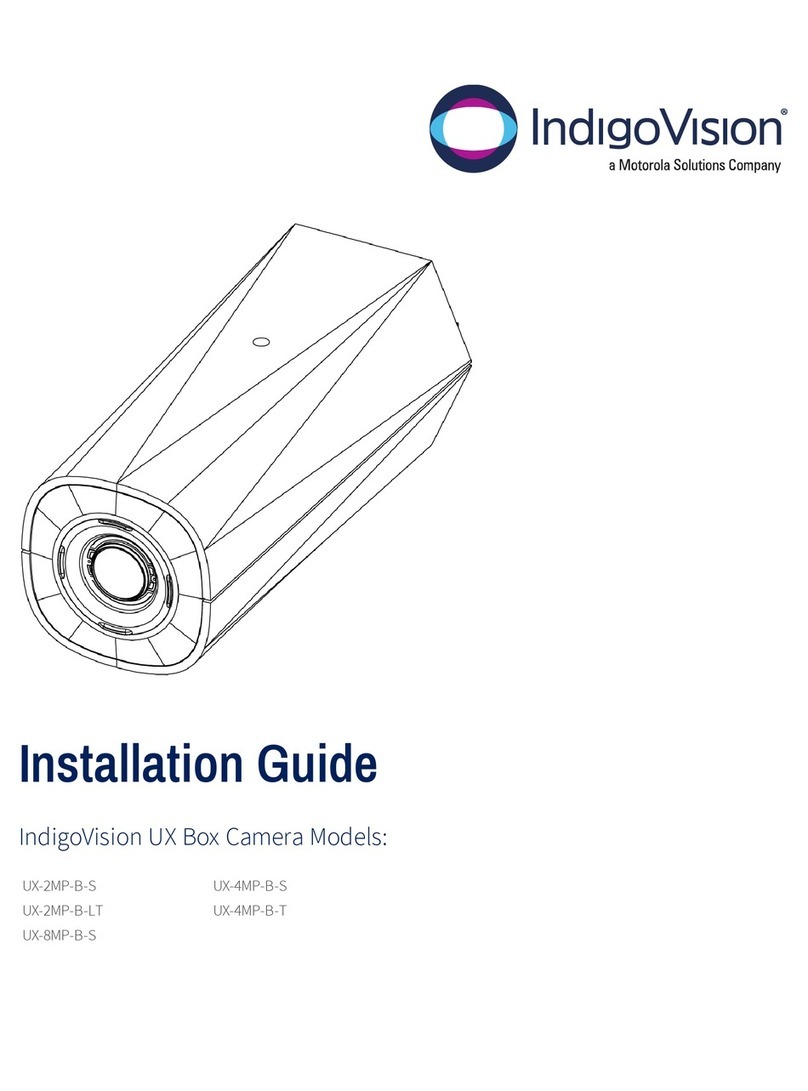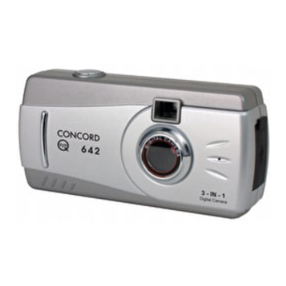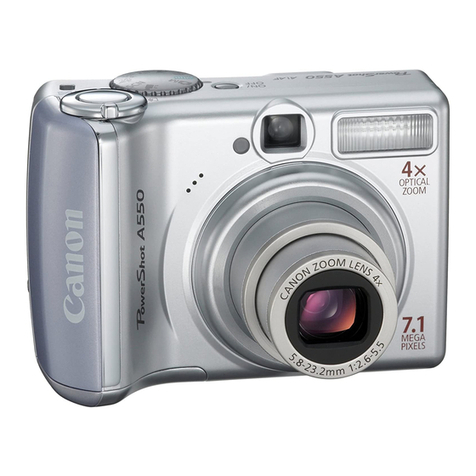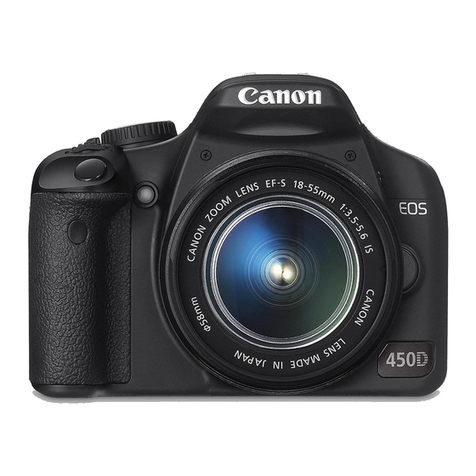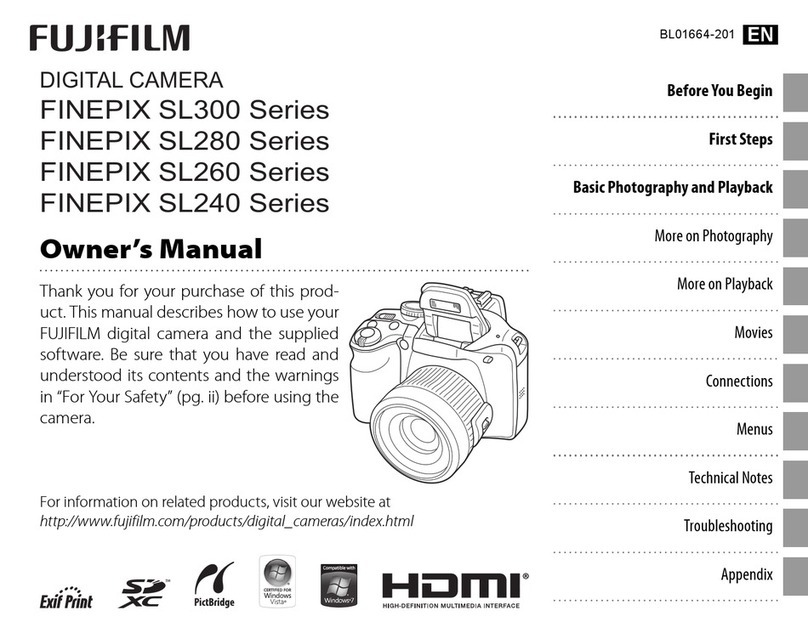SVBONY SV605CC User manual

User Manual
SV605CC

To Customers
Package List
Camera Appearance Introduction
Camera Specification
How to Use the Camera
Camera Structure
Performance Chart
Store and General Clean
Quality Assurance
Warning
DE:12-22
FR:23-33
IT:34-44
ES:45-55
JP:56-65
RU:66-76
--------------------------------------------------------01
---------------------------------------------------------01
-----------------------------01
----------------------------------------------02
-------------------------------------------02
---------------------------------------------------06
-------------------------------------------------06
-----------------------------------------08
--------------------------------------------------09
----------------------------------------------------------------11
CONTENT
EU Importer:
Address:Uetzenacker 29,38176 wendeburg
Name:Germany Retevis Technology GmbH

01
1. To Customers
Hello, friends! You can download SV605CC User Manual pdf file or print this file.
SVBONY has the rights to modify this document without prior notice. Please
download the latest version from our official website.
Thanks for purchasing your new SVBONY astronomy camera! This manual will
give you a brief introduction of the SV605CC camera. Please read this manual
completely before using it. If you have any questions, please feel free to contact
us:
Facebook: www.facebook.com/svbony
2. Package List
3. Camera Appearance Introduction
1
2
3
4
5
6
7
8
9
10
11
12
13
SV605CC Camera
Camera Bag
2 inch Cover
USB3.0 Data Cable
M42-M42F-21L
M42-M48F-16.5L
T2-1.25-inch Adapter
1.25 inch T-adapter
M42-M48 Ring
Sponge Washer
User Manual
Packaging Box
12V Power Adapter
1
1
1
1
1
1
1
1
1
3
1
1
1
Serial Number Package Contents Quantity
Cooling Fan
Radiator
USB3.0 Data Interface
Refrigeration Power
Interface
Protecting and Sealing
Windows (AR coating)
Drying Chamber

02
4. Camera Specification
5. How to Use the Camera
5.1 Driver Installation
For Windows system users
1
2
3
4
5
6
7
8
9
10
11
12
13
14
15
16
17
18
19
20
21
22
23
24
25
26
27
28
29
30
31
Model
Sensor
Image Resolution
Total Pixels
Pixel Size
Target Size
Diagonal
Maximum Frame Rate
Shutter Type
USB Type
Cache
Time of Exposure
Readout Noise
QE Peak
Full Charged
ADC
Temperature Display
Cooling System
Digital Noise Reduction
ROI
Pixel Binning
Operating System
Protective Window Optical Glass
Camera Interface Specifications
Back Intercept
Working Temperature
Storage Temperature
Working Humidity
Storage Humidity
Working Current
Stand-by Current
SV605CC
IMX533 CMOS Color
3008x3008
9.0 M Pixel
3.76μm
1”
15.968mm
20fps
Rolling Shutter
Type-B USB 3.0
DDR3 256M
0.05mS-2000S
1.0e
80%
50ke-
14bit
Display on software
TEC Semiconductor 2-Stage
Refrigeration
Support
Support
BIN1,BIN2,BIN3,BIN4
Windows, Linux, MAC OS,
Raspberry Pi, Chrome OS
AR Coating
2” / 1.25” / M42X0.75
6.5mm/17.5mm
-10°---+50°
-20°---+60°
20% RH-80% RH
20% RH-95% RH
<300MA
<30MA

03
1.Download the latest Native Driver from svbony website www.svbony.com.
2.Unzip the file, and install the Svbony Driver to your computer.
3.Check the Driver installed successfully
5.2 Image Software Installation
For Sharpcap users
1. Download the Sharpcap software from official website. Remember if your
computer run 64 bit system, then download the 64 bit sharpcap is better. Or the
32 bit sharpcap is ok.
2. Install Sharpcap software to your computer.
5.3 Equipment

04
The SV605CC camera works with filters, telescopes and camera lens via
adapters. Most adapters are already included. Other adapters you can purchase
directly from svbony website.
1.Connect SV605CC to 1.25” telescope
2.Connect SV605CC to 2” telescope
3.55mm back focus distance
5.4 Connect with software
Enter Sharpcap software, Click the CAMERA button, and choose the SV605CC
camera, If the Native Driver installed without any problems, you will see the
image on the screen, and the frame rates. Like showing in the following image.
The camera works.

05
Note:
a.If any problems, you can check if the camera recognized by the computer in
the device manager.
b.The introductory operation guide of sharpcap can be viewed in the "Help"
option of the software. At the same time, there is a PDF file download under
"Documents" on the homepage of sharpcap's official website, which can be
downloaded and studied.
Using N.I.N.A
Launch/Log in N.I.N.A. —Nighttime Imaging ‘N’ Astronomy. Connect via ASCOM
/Native driver.
Turn on the refrigerator to set the temperature.

06
Set the exposure time to capture the image.
6. Camera Structure
7. Performance Chart
7.1 QE Curve & Readout Noise
QE curve and readout noise are the most important parameters to measure
camera performance. Higher QE and lower readout noise are necessary

07
conditions to improve the image signal-to-noise ratio.
Readout noise includes pixel noise, circuit noise, and ADC quantization noise.
The lower the readout noise, the better. As shown in the figure, the readout
noise of the SV605CC is very low compared with conventional CCD cameras.
Built-in HCG mode, which can effectively reduce readout noise at high gain, so
that the camera maintains the same wide dynamic range as at low gain. When
the gain is 120, the HCG mode is automatically turned on, the readout noise is
as low as 1.2e, and the dynamic range can still reach a level close to 14bit. The
parameter settings are also different depending on your shooting target. Turn
down the gain, the dynamic range will become larger, suitable for long
exposures. Increase the gain, the readout noise will be further reduced, which is
suitable for short exposure or lucky imaging.
7.2 Power Consumption
The SV605CC camera is a low-power camera. When the camera is powered by
a USB cable, the maximum power consumption is 1.85W. But for cooling
function, you need to use a 12V@5A power adapter (D5.5*2. lmm, center
positive), or you can use a lithium battery (supports a wide range of 11V to 15V).
The picture below is the cooling efficiency diagram of our freezer camera. A
cooling temperature difference of 30 degrees only requires a current of 0.5A.
7.3 TEC Cooling System

08
The TEC cooling system of the SV605CC camera can precisely control the
temperature of the sensor. Different from the traditional CCD, the SV605CC
camera has ultra-low readout noise, efficient cooling and adjustable gain. It is no
longer necessary to use ultra-long exposures to capture targets, which greatly
reduces the requirements for the camera system and guide star system.
However, if short exposures are used (e.g. less than 100ms), cooling has little
effect on the image. The cooling system can be set to a minimum of 35~40°C
below the ambient temperature (Tested based on ambient temperature of 30°C).
Please note that the maximum temperature difference may fluctuate after
pro-longed use. Meanwhile, when the ambient temperature decreases, the
cooling temperature difference will also decrease accordingly. The figure below
is the dark current curve of the SV605CC sensor between -20°C and 35°C.
7.4 AR Coating Filter
The SV605CC camera sensor is equipped with a protective window and uses an
AR coated filter.
8. Store and General Clean
Protect the Refrigerator
Thermal shock should be avoided when using the camera. The so-called
thermal shock refers to the internal strong stress that the refrigerator has to bear
due to the principle of thermal expansion and contraction when the temperature
of the refrigerator suddenly rises or falls. Severe thermal shock can shorten the
life of the cooler or even damage it completely. Therefore, when you start using

09
the cooler to adjust the temperature of the CMOS, you should avoid turning on
the cooler to maximum power at once. Instead, the power of the cooler should
be gradually increased. Before disconnecting the power supply, if the power of
the cooler is relatively high, the power of the cooler should be gradually reduced,
and then disconnect the power supply.
Cleaning of CMOS Sensors and Optical Window
If you find dust on the CMOS sensor, you can remove the front half of the
camera. Then use the cleaning kit for DSLR camera sensors to clean the CMOS
sensor. You must be careful when cleaning it. You can also use a DSLR
cleaning tool or lens tissue to clean it. Be careful not to use too much force,
because the coating of the CMOS sensor is very fragile and can be scratched
easily. The general identification of whether the dust is on the sensor or on the
window glass is as follows.
Dry Camera CMOS Chamber
The CMOS sensor is located in the CMOS chamber. There is a hole on the side
of the front of the camera. If moisture in the CMOS chamber fogs the sensor
glass, you can dry it by connecting a silicone tube through this hole. Please put
an effective silica gel desiccant in the silica gel stick and make sure that there is
cotton inside to prevent silica gel from entering the CMOS chamber.
9.Quality Assurance
The SV605CC camera warranty time is one year. Within warranty period, if the
camera fails to function, we will provide free after-sales maintenance service.
Besides the warranty days, we provide life-long maintenance services and
charge only the parts that need repair or replacement. The buyer will pay for the
postage of returning camera to factory to be repaired. Within the warranty
period, if the following condition occurs, certain maintenance costs will be
charged.
1. The malfunction and damaged caused by incorrect use, the unauthorized
repairs and alteration.
2. The damage caused by fire, flood, earthquake, other natural disasters and
secondary product damage.

10
3. The product malfunction caused by the fall and transportation failures after
purchase.
4. The malfunction and damaged caused by the other barriers (man-made
factors or external device).
5. Purchase without the warranty card and purchase invoices.

FCC Requirements:
•Products authorized under Part 15 using SDoC or Certification require a label
containing one of the following compliance statements
(1)Receivers associated with licensed device service operaions:
This device complies with part 15 of the FCC Rules. Operation is subject to the
condition that this device does not cause harmful interference.
(2)Stand-alone cable input selector switch:
This device complies with part 15 of the FCC Rules for use with cable television
service.
(3)All other devices:
•This device complies with part 15 of the FCC Rules. Operation is subject to the
following two conditions:
(1) This device may not cause harmful interference, and
(2) this device must accept any interference received, including interference that
may cause undesired operation.
CE Requirements:
•(Simple EU declaration of conformity) Hong Kong Svbony Technology Co.,Ltd
declares that the equipment type is in compliance with the essential
requirements and other relevant provisions of RED Directive 2014/30/EU and the
ROHS Directive 2011/65/EU and the WEEE Directive 2012/19/EU; the full text of
the EU declaration of conformity is available at the following internet address:
www.svbony.com.
•Disposal
The crossed-out wheeled-bin symbol on your product, literature, or packaging
reminds you that in the European Union, all electrical and electronic products,
batteries, and accumulators (rechargeable batteries) must be taken to
designated collection locations at the end of their working life. Do not
dispose of these products as unsorted municipal waste. Dispose of
them according to the laws in your area.
IC Requirements:
CAN ICES-3(B)/NMB-3(B)
Avoid Choking Hazard
Small Parts. Not for children under 3 years.
Approved Accessories
ATTENTION!
Before using this device, read this guide which contains important
operating instructions for safe usage and control for compliance
with applicable standards and regulations.
•This device meets the regulatory standards when used with the
Svbony accessories supplied or designated for the product.
•For a list of Svbony-approved accessories for your item, visit the
following website: http://www.Svbony.com
WARNING
11

12
1. An den Kunden
Hallo Freunde! Sie können die SV605CC Bedienungsanleitung als PDF-Datei
herunterladen oder diese Datei ausdrucken. SVBONY behält sich das Recht vor,
dieses Dokument ohne vorherige Ankündigung zu ändern. Please download the
latest version from our official website.
Vielen Dank für den Kauf der neuen SVBONY Astro-Kamera! Dieses Handbuch
gibt Ihnen eine kurze Einführung in die SV605CC Kamera. Bitte lesen Sie dieses
Handbuch vollständig, bevor Sie es verwenden. Bitte zögern Sie nicht, uns zu
kontaktieren, wenn Sie Fragen haben:
Facebook: www.facebook.com/svbony
2. Liste der Pakete
3. Einführung in das Erscheinungsbild der Kamera
1
2
3
4
5
6
7
8
9
10
11
12
13
SV605CC Kamera
Kamera Tasche
2 Zoll Deckel
USB 3.0 Datenkabel
M42-M42F-21L
M42-M48F-16.5L
T2-1.25 Zoll Adapter
1.25 "T-Adapter
M42-M48 Ring
Schwammwaschmaschine
Bedienungsanleitung
Verpackung
12V Netzteil
1
1
1
1
1
1
1
1
1
3
1
1
1
Seriennummer Inhalt der Packung Anzahl
Kühlgebläse
Heizkörper
USB 3.0 Datenschnittstelle
Kühlstromschnittstelle Schutz und Abdichtung
von Fenstern
(AR-Beschichtung)
Trockenraum

13
4. Spezifikation der Kamera
5. Wie man die Kamera benutzt
5.1 Treiberinstallation
Für Windows-Systembenutzer
1
2
3
4
5
6
7
8
9
10
11
12
13
14
15
16
17
18
19
20
21
22
23
24
25
26
27
28
29
30
31
Modell
Sensor
Bildauflösung
Gesamtpixel
Pixel Größe
Zielgröße
Diagonale
Maximale Framerate
Verschlussart
USB-Typ
Zwischenspeicher
Belichtungszeit
Ausleserauschen
QE-Spitze
Voll aufgeladen
ADC
Temperaturanzeige
Kühlsystem
Digitale Rauschunterdrückung
ROI
Pixel-Binning
Betriebssystem
Betriebssystem
Schutzfenster aus optischem Glas
Spezifikationen der
Kameraschnittstelle
Zurück abfangen
Arbeitstemperatur
Lagertemperatur
Arbeitsfeuchtigkeit
Lagerfeuchtigkeit
Arbeitsstrom
SV605CC
IMX533 CMOS Farbe
3008x3008
9.0 M Pixel
3.76μm
1”
15.968mm
20fps
Rolltor
Type-B USB 3.0
DDR3 256M
0.05mS-2000S
1.0e
80%
50ke-
14bit
Anzeige auf der Software
TEC-Halbleiter 2-stufige Kühlung
Unterstützt
Unterstützt
BIN1,BIN2,BIN3,BIN4
Windows, Linux, MAC OS,
Raspberry Pi, Chrome OS
AR-Beschichtung
2” / 1.25” / M42X0.75
6.5mm/17.5mm
-10°---+50°
-20°---+60°
20% RH-80% RH
20% RH-95% RH
<300MA
<30MA

14
1.Laden Sie die neuesten nativen Treiber von der svbony-Website www.svbo-
ny.com herunter.
2.Extrahieren Sie die Datei und installieren Sie den Svbony Treiber auf Ihrem
Computer.
3.Prüfen Sie, ob der Treiber erfolgreich installiert wurde
5.2 Installation der Image-Software
Für Sharpcap Benutzer
1. Laden Sie Sharpcap Software von der offiziellen Website. Denken Sie daran,
wenn Ihr Computer auf einem 64-Bit-System läuft, ist es besser, 64-Bit-Sharp-
cap herunterzuladen. Oder 32-Bit-Sharpcap.
2. Installieren Sie die Sharpcap-Software auf Ihrem Computer.

15
5.3 Ausrüstungen
Die Kamera SV605CC arbeitet mit Filtern, Teleskopen und Kameraobjektiven
über Adapter. Die meisten Adapter sind bereits im Lieferumfang enthalten.
Andere Adapter können Sie direkt von der Website von svbony kaufen.
1.Verbinden Sie den SV605CC mit einem 1,25 Zoll Teleskop
2.Verbinden Sie den SV605CC mit einem 2-Zoll-Teleskop
3.55mm Rückfokusabstand
5.4 Verbindung mit Software
Geben Sie die Sharpcap-Software ein, klicken Sie auf die CAMERA-Schalt-
fläche und wählen Sie die SV605CC-Kamera aus. Wenn der native Treiber ohne
Probleme installiert ist, sehen Sie das Bild auf dem Bildschirm, zusammen mit
der Bildrate. Wie in der Abbildung unten gezeigt. Die Kamera funktioniert.

16
Hinweis:
a.Wenn es Probleme gibt, können Sie im Geräte-Manager überprüfen, ob es
vom Computer erkannt wird.
b.Die einführende Bedienungsanleitung von Sharpcap kann in der „Help“-Option
der Software eingesehen werden. Gleichzeitig gibt es auf der Homepage der
offiziellen Website von sharpcap unter "Documents" eine PDF-Datei zum
Download, die heruntergeladen und studiert werden kann.
Verwendung des N.I.N.A.
Start/Login N.I.N.A. —Imaging Astronomy in the Night. Die Verbindung erfolgt
über ASCOM/Native Driver.
Öffnen Sie den Kühlschrank, um die Temperatur einzustellen.

17
Stellen Sie die Belichtungszeit ein, um das Bild aufzunehmen.
6. Aufbau der Kamera
7. Leistungsdiagramm
7.1 QE-Kurve und Ausleserauschen
Die QE-Kurve und das Ausleserauschen sind die wichtigsten Parameter, um die
Leistung einer Kamera zu messen. Eine höhere QE und ein geringeres

18
Ausleserauschen sind notwendige Bedingungen, um das Signal-Rausch-Ver-
hältnis des Bildes zu verbessern.
Das Ausleserauschen umfasst Pixelrauschen, Schaltungsrauschen und
ADC-Quantisierungsrauschen. Je geringer das Ausleserauschen, desto besser.
Wie in der Abbildung zu sehen ist, ist das Ausleserauschen der SV605CC im
Vergleich zu herkömmlichen CCD-Kameras sehr gering. Der eingebaute
HCG-Modus reduziert effektiv das Ausleserauschen bei hoher Verstärkung und
hält die Kamera so weit im Dynamikbereich wie bei niedriger Verstärkung. Wenn
die Verstärkung 120 beträgt, schaltet sich der HCG-Modus automatisch ein, das
Ausleserauschen ist so niedrig wie 1,2 E und der Dynamikbereich kann immer
noch ein Niveau von fast 14 Bit erreichen. Die Parametereinstellungen variieren
auch je nach Schießziel. Reduzieren Sie die Verstärkung und der Dynamikbere-
ich wird größer, was für Langzeitbelichtungen geeignet ist. Durch Erhöhen der
Verstärkung wird das Ausleserauschen weiter reduziert, was für kurze
Belichtungen oder glückliche Bildgebung geeignet ist.
7.2 Stromverbrauch
Die Kamera SV605CC ist eine Low-Power-Kamera. Wenn die Kamera über ein
USB-Kabel mit Strom versorgt wird, beträgt der maximale Stromverbrauch
1,85W. Für die Kühlung benötigt man jedoch ein 12V@5A Netzteil (D5.5*2.lmm,
zentraler Pluspol) oder eine Lithium-Batterie (unterstützt einen weiten Bereich
von 11V bis 15V).
Das folgende Bild zeigt die Kühleffizienz unserer Tiefkühlkamera. Für eine
Kühltemperaturdifferenz von 30 Grad wird nur ein Strom von 0,5 A benötigt.
Table of contents
Languages:
Other SVBONY Digital Camera manuals
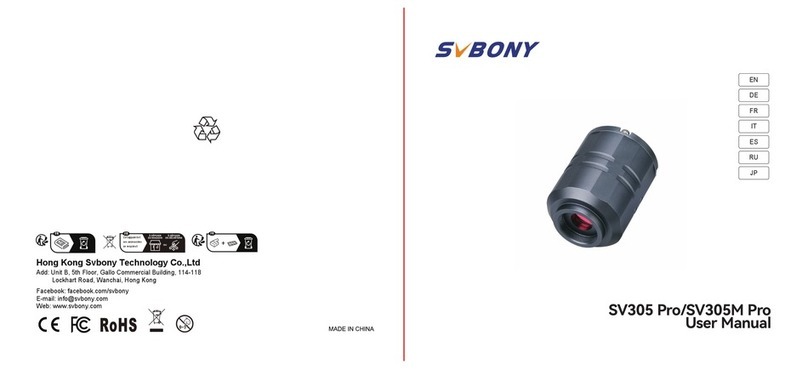
SVBONY
SVBONY SV305 Pro User manual

SVBONY
SVBONY SV105 User manual
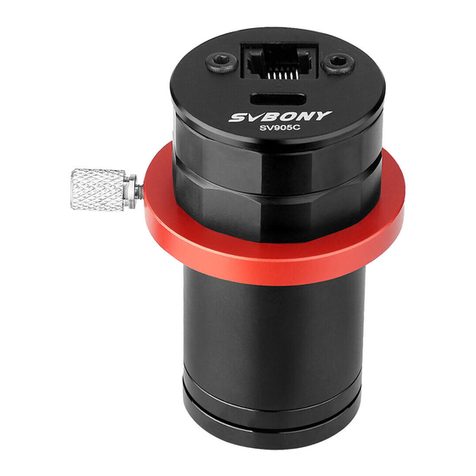
SVBONY
SVBONY SV905C User manual

SVBONY
SVBONY SV505C User manual
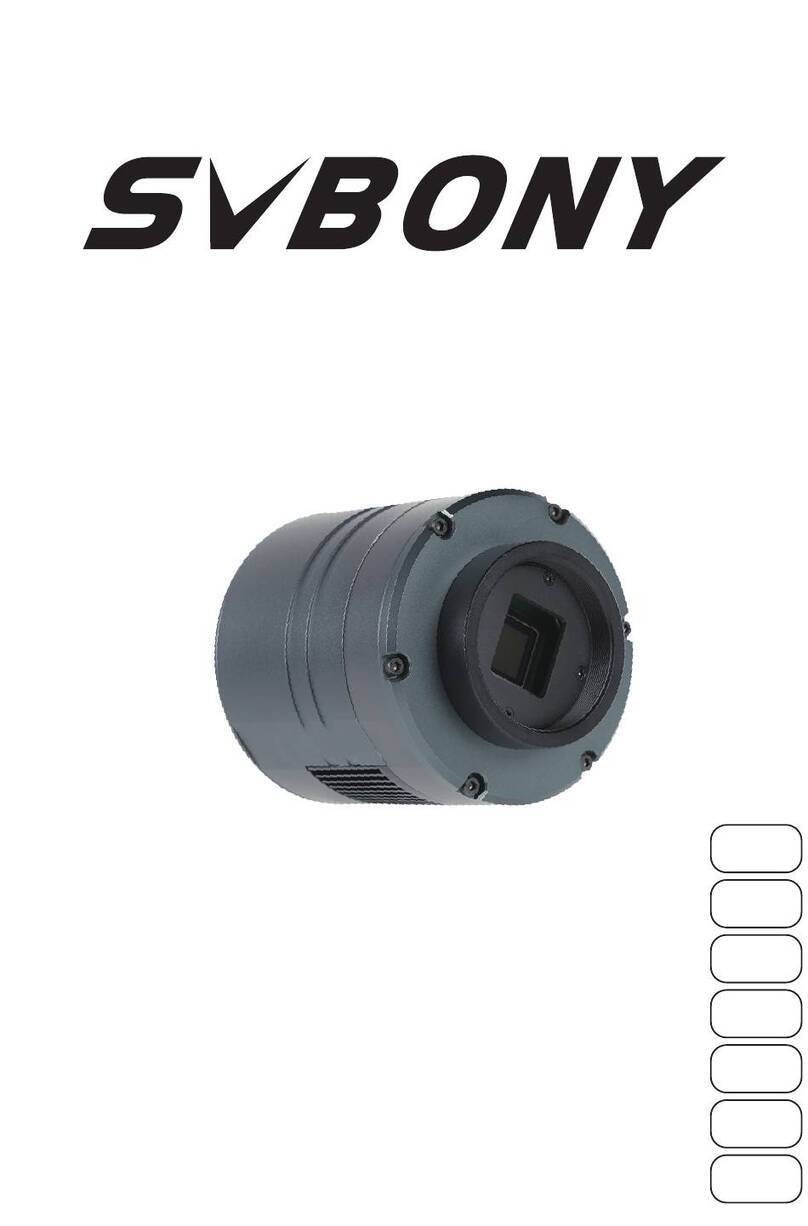
SVBONY
SVBONY SV605MC User manual
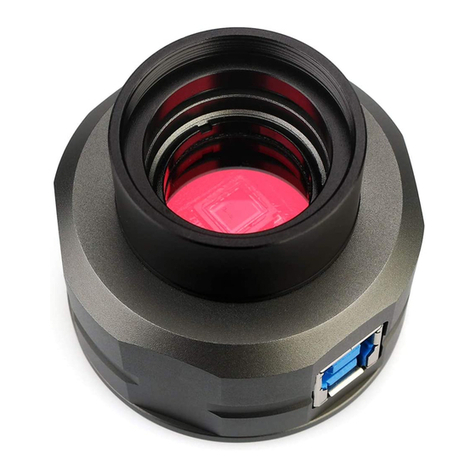
SVBONY
SVBONY SV205 User manual
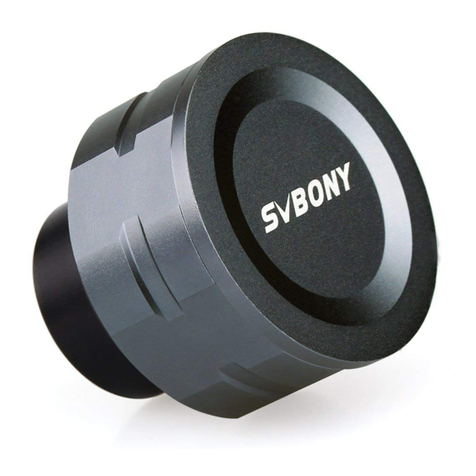
SVBONY
SVBONY SV105 User manual
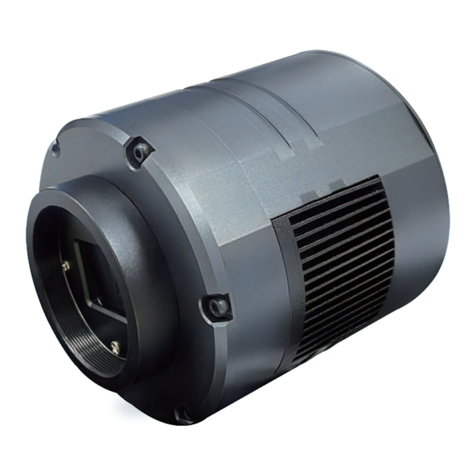
SVBONY
SVBONY SV405CC User manual
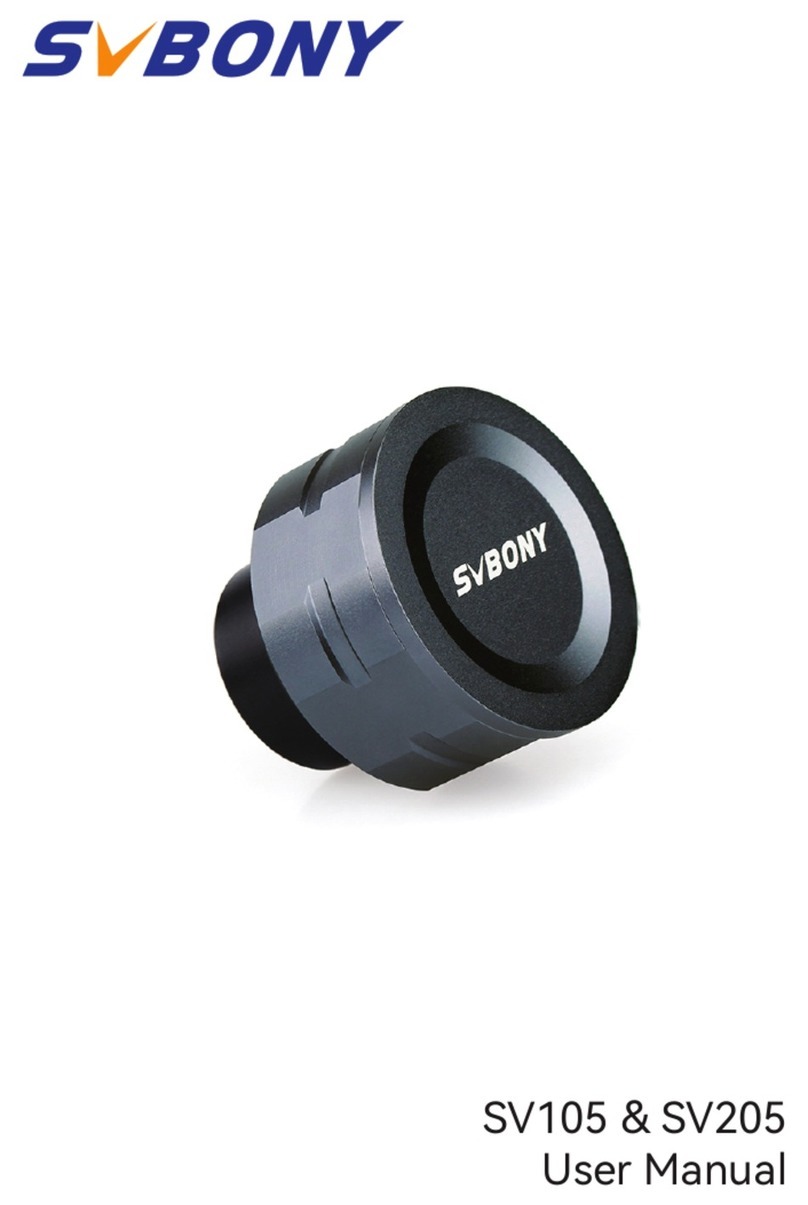
SVBONY
SVBONY SV105 User manual

SVBONY
SVBONY SV189 User manual

